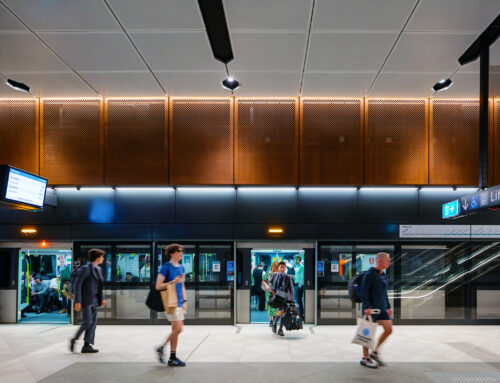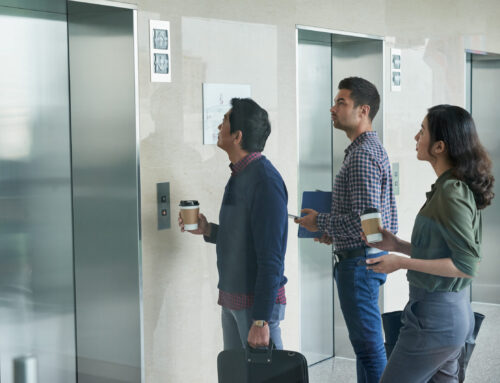In the recent past facilities managers may have relied on a number of data sources to understand utilisation of space in their buildings. Sources could traditionally include room schedules, swipe card access logs and occupancy sensors. Unfortunately each of these data sources don’t properly record actual space use. For example a room schedule may block out time for a department or team to use a space, but it doesn’t show if a space was actually used at the time. Conversely swipe access logs and occupancy sensors will show a space has been accessed, but not how many people were actually in the space at a given moment. So, whilst we have an understanding that for example a space with a capacity of 20 people was used, we may not know that only 2 people used it at the time. New technology however now allows for a more nuanced approach to understanding space use through people counting.
People counting technology will not only detect that a space is in use, but the number of people in a space at any given time. This information is particularly useful for a few reasons. One, it allows facility managers to understand if rooms are in fact being utilized appropriately. For example a ten person meeting room consistently being booked for three people may result in the division of a space to create more appropriate sized rooms for specific purposes such as small group meetings.
Utilising the data from people counting technology managers can create heat maps for spaces to understand not only occupancy levels at any given time but across the full day, week, month and year, helping them to better schedule space use.
Counting technology can also provide end users with real time information about available space for booking of meetings.
Occupancy levels can also be used real time to better control one of the larger consumers of energy, air conditioning.
Most of the time in a meeting room, air conditioning is set as ‘on’ and set at a particular temperature point during business hours, regardless of whether a space is being used. From a user perspective the immediate impact is of feeling cold when initially entering a large meeting room. Air conditioning systems are also usually designed to suit the maximum occupancy of that space, not the actual occupancy. These default settings in many HVAC systems can result in wasted energy use and poor occupant comfort.
Understanding the actual use of spaces can help facilities managers better tune these spaces to cater to actual conditions.
One strategy managers can employ using people counting is to set HVAC controls to a sliding scale. Room temperature set points are higher in unoccupied mode, with the temperature set to decrease as room occupancy rates increase. Delivering not only lower energy costs but increasing the lifespan of plant equipment.
In some spaces it may also be entirely appropriate to set systems as off by default and to have controls linked to the space heat map. Meaning that if a space is utilised mostly at 7pm on Tuesday, that the system is set to turn on an hour beforehand at a higher set point that then lowers based upon actual space use.
Understanding space utlisation can also lead facilities manager, once armed with real world, real time data to begin investigating why some spaces may be under or overutilised. These investigations may lead to simple remediations, adding an acoustic solution to a room that may be subject to traffic noise for example.
The good news is that facilities managers can deploy people counting technology to their spaces without too much pain.
In spaces where occupancy sensors already exist a direct swap to a people counting sensor can be made. In other spaces there are also a significant number of wireless and IoT solutions available, meaning that people counters that run on batteries and communicate with a gateway makes the installation really easy and really cheap. The only downside of course is that every five years batteries need to be changed.
Other options include the deployment of hardwired sensors that take their power supply from the nearest light fitting, but then communicate wirelessly.
People counting data could also be integrated with lighting control, blind control and AV equipment to create an entire room experience. From selecting lighting scenes based on meeting host preferences and number of occupants, to automatically closing blinds when spaces are occupied and AV equipment is enabled, the possibilities for use of granular people count data is far greater than simple occupancy detection.
Facilities managers also don’t need to wait until they have a bank of data for analysis before implementing control strategies for changes to air conditioning systems either. Implementation of a sliding scale for room HVAC systems can be deployed at the same time as people counting technology as long as the building’s management system allows this functionality.
Ultimately the deployment of people counting can allow managers to begin making informed decisions about space use while also proactively reducing energy consumption in their facilities.










